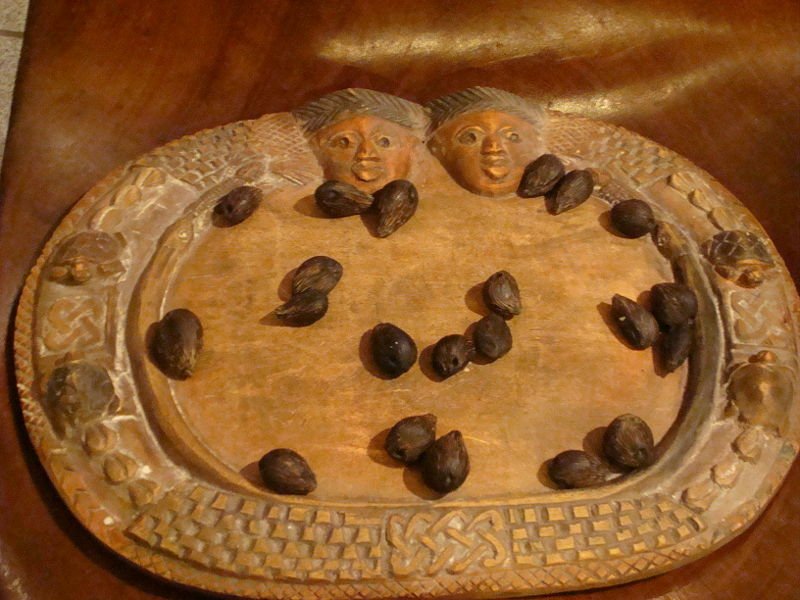... The tray and tapper
are used in Ifa divination, a central
ritual within Yoruba religion. This
tray, adorned with carved images and
dusted with powder, serves as the
template on which sacred signs (odu)
related to the personal concerns of a
diviner's client are traced as the point
of departure for analysis. In contrast
to those transitory signs, the more
permanent backdrop of the carved motifs
on the tapper and tray constitutes an
artistic exegesis of the forces that
shape human experience and the universal
needs fulfilled by such quests for
enlightenment.
To initiate the ritual, the babalawo
places the tray in front of him and taps
rhythmically on it with the pointed end
of the tapper, invoking the presence of
past diviners and of Ifa (also called
Orun-mila) the god of divination as
well as other Orisa.
There are a variety of
palm nuts that are available, but only
specific kinds may be used for Ifa
divination and must have at least 3
'eyes' or more. The palm nuts are
grouped in one hand, then the diviner
attempts to shift them all to his/her
other hand at once, and counts the
remaining Ikin left, hopefully to
discover that either one or two remain.
(Odu, which are the foundation of the
binary data, can only be marked with
either one or two palm nuts, remaining
in the diviner's original hand. As this
process goes on, the diviner marks
single or double marks in wood powder
spread on his divination tray until he
or she has created one of the 256
odus that are available.
Each of these odus
is associated with a traditional set of
Ese (verses), often relating to Yoruba
mythology, which explain their
divinatory meaning. These verses
represent thousands of years of
observation and are filled with
predictions, and both mundane and
spiritual prescriptions that resolve
issues found in that Odu. Within Ifa,
Believers find all the knowledge of the
world past present and future.
After obtaining the
Odu that governs a situation or event,
the diviner then determines whether the
Odu comes with Ire (which is poorly
translated to mean good luck) or Ibi
(which could be viewed as obstacles or
impediments to success). After this
process the diviner now determined
appropriate offerings, spiritual
disclipines and/or behavioral changes
necessary to bring, keep or compel
success for the person receiving
divinatory counsel ... (Wikipedia)
